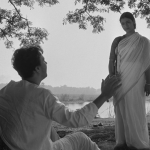
Melodrama will be discussed on a number of different levels in this course: as a genre, as a meta-genre, and as a theoretical orientation. We will explore a range of theories of melodrama, including those of Peter Brooks, Mary Anne Doane and Thomas Elsaesser. Melodrama incorporates a wide variety of stylistics and aesthetics, and has different cultural incarnations in world cinema, and different directors have exploited it for various effects. As a discourse of sensation and affect, melodrama has been historically discounted as a “woman’s genre”; and yet recent theory has suggested that melodrama is a valuable cultural discourse of gender, race, capital and modernity. The term is not often used in the context of art history, although there are many interesting parallels between 19th century painting and the melodramatic imagination. In addition, contemporary artists are often inspired by film melodrama and incorporate various aspects of it into their work. In this course we will explore a variety of intersections between film melodrama and visual arts in terms of themes of theatricality, gesture, excess, domestic space and tableaux.


